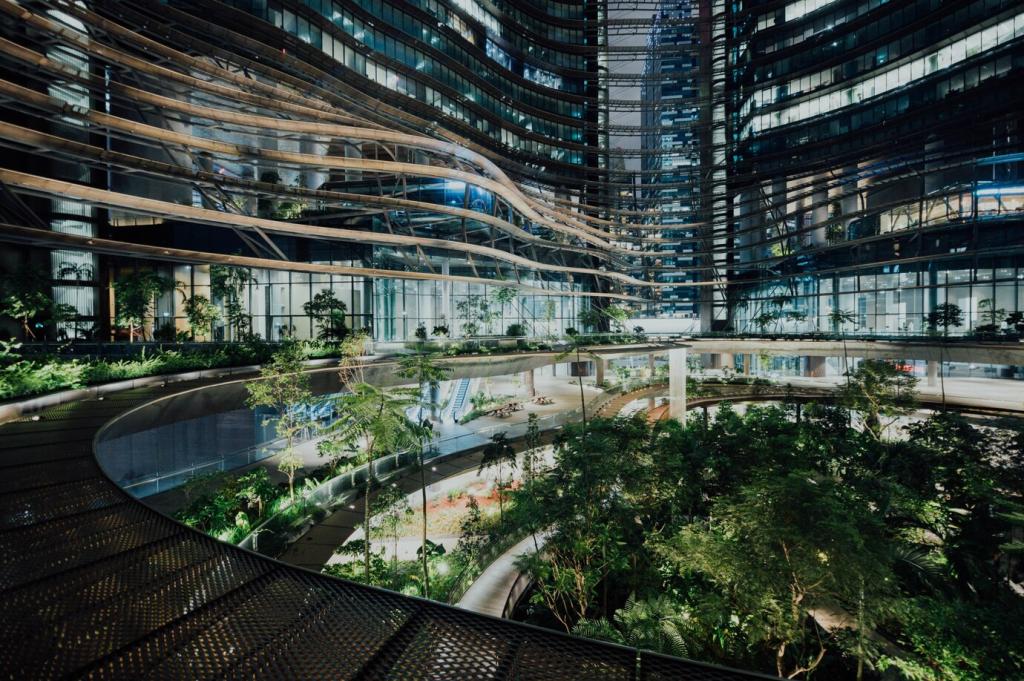Drainage, Moisture, and Slope Management
Robust assemblies rely on filter fabric to prevent fines migration, drainage composites to move water, and relief points at scuppers or overflows. Perforated piping with cleanouts and accessible strainers ensures water finds exits even during storms or seasonal leaf drop.
Drainage, Moisture, and Slope Management
Ponding increases load and prolongs membrane wetting. Slight structural slope, tapered insulation, and capillary breaks reduce risk. In inverted roofs, stable insulation with low water absorption is essential, or R-value loss and ice lenses can subtly damage layers and adjacent concrete.


